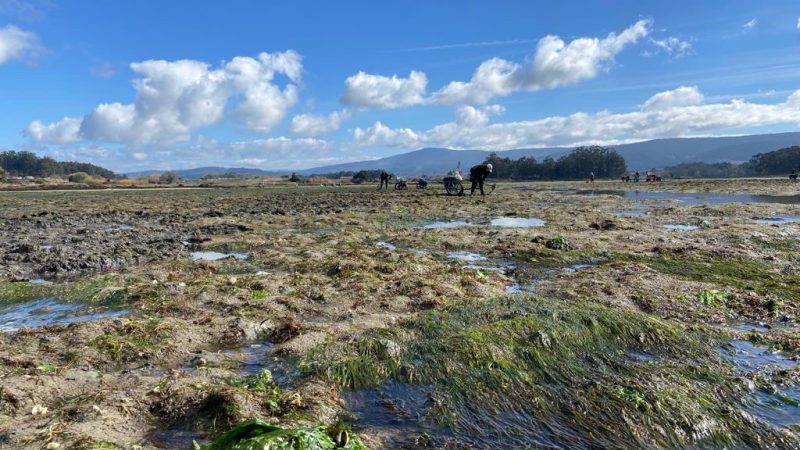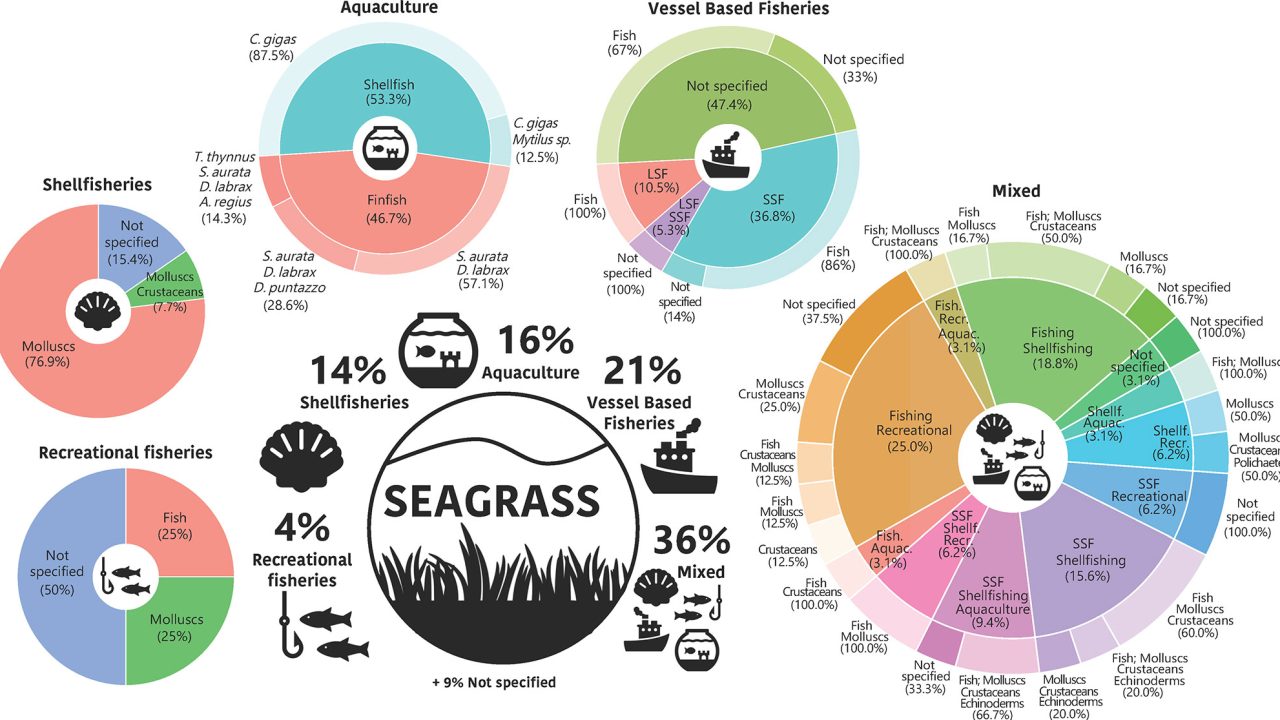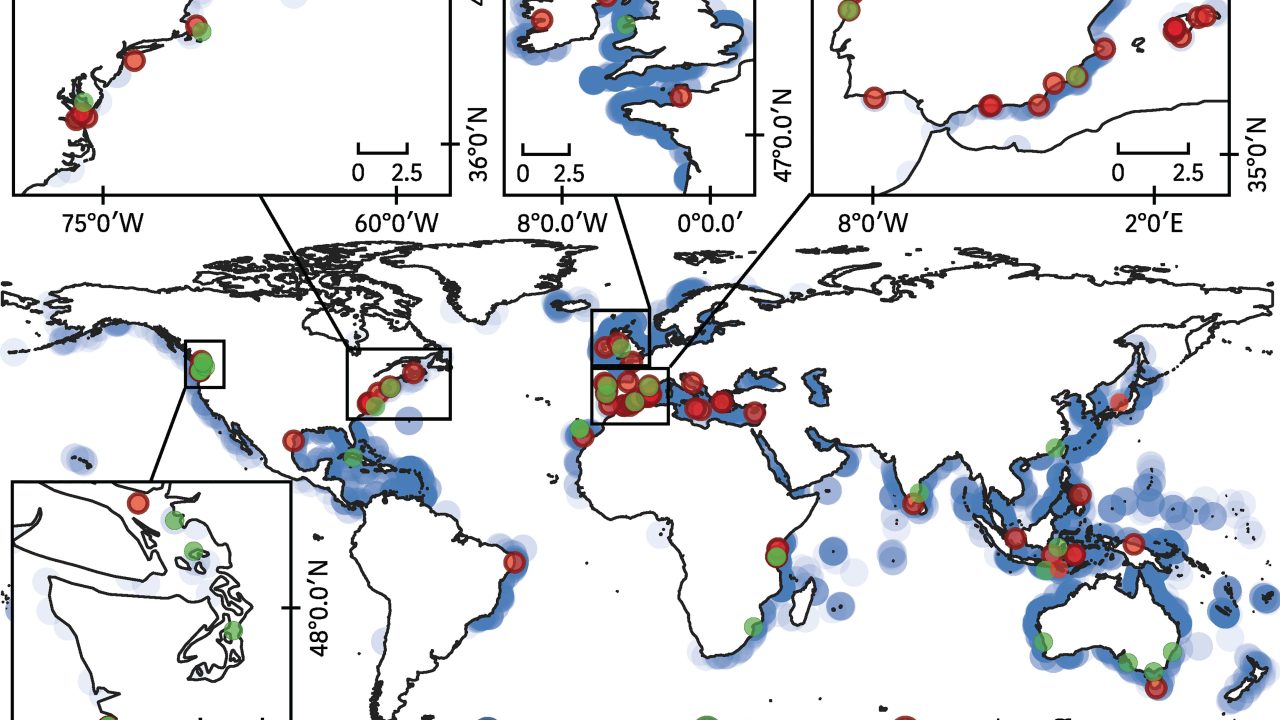As part of the ZEUS project, they analyzed the impact of activities on the conservation of phanerogams. CIM-UVigo researchers Celia Olabarría and Elsa Vázquez are the IPs of the project.
Due to the pressure caused by various human activities and with the aim of improving their management and conservation, in recent decades, numerous studies are focusing on marine prairies of the genus Zostera or Posidonia, which form very relevant ecosystems in the intertidal and infralittoral coastal areas in many regions of the planet. As part of the ZEUS research project, coordinated by researchers from the Marine Research Center of the University of Vigo Celia Olabarria and Elsa Vázquez, a team of Galician scientists publish in the journal Frontiers in Marine Science, Trade-Offs and Synergies Between Seagrass Ecosystems and Fishing Activities: The Global Literature Review, a global review of the scientific literature on the interactions between marine prairies and extractive activities, such as fishing and shellfishing.
“The aim of this article is to obtain a reference point, a guide to know what are the conservation problems that these seabeds face in the world, in relation to fishing activities. Prairies provide very important ecosystem services in the context of climate change, such as species refuge, increased water productivity, pollutant filtration, seabed fixation against erosion or carbon sequestration, ”explains Mariana Herrera (Cretus-University of Santiago de Compostela), first author of the article, signed by Celia Olabarria and Elsa Vázquez (University of Vigo), Carlos Duarte (King Abdullah University of Saudi Arabia) and Pablo Pita, Ana Tubío and Sebastián Villasante (Cretus-University of Santiago de Compostela).
“We have participated in the design of interviews and workshops with the guilds, the results of which are being analyzed and will be the subject of another publication. The review that corresponds to this article is a bibliographic study of the role of the prairies of phanerogams from a socio-economic point of view and is a review of interest, since no work of like thishad been done until now “, explain Celia Olabarría and Elsa Vázquez, teachers and researchers at the CIM of UVigo and IP of the project.
Impacts and benefits from a socio-ecological and economic perspective
Although there are more publications in the northern hemisphere, the authors have studied about a hundred works in various coastal areas of the different oceans. These publications have increased mainly since the beginning of the 21st century, which shows the growing interest in these interactions in the last two decades due to the accumulation of anthropogenic pressures and the consequent decline suffered by seagrass beds along the 20th century. In recent years, the loss of surface area of these spaces continues to advance, at a rate of about 7% per year throughout the world. The increase in temperature associated with climate change is thus linked to the impacts already caused by trawling, dredging, the use of engines or the spread of invasive species associated with aquaculture.
This review aims, therefore, according to its authors, to “analyze the current situation of these interactions, identify possible knowledge gaps and determine research priorities.” In this sense, the author of the paper warns of the scarcity of studies focused on the interactions between marine prairies and fishing activities with an interdisciplinary perspective, which take into account the socioecological and socioeconomic implications of possible conflicts. “This knowledge is essential to create relevant policies and management plans and to promote systems of government that take into account the rights and needs of the fisheries sector,” says the study.
Positive and negative interactions
The analysis collects two categories of interactions, which could be considered positive or negative and each is shown on a scale of magnitude according to its impact, from a minimum degree to the highest. “Most of the studies reviewed describe a negative interaction between these seabeds and fishing or shellfishing activities. In the case of Galicia, for example, we have been studying these interactions since 2019 and we have seen that in some areas there is a conflict between shellfish and the presence of prairies of Zostera: shellfishers tell us that sometimes they have to uproot them to shellfish. But this distribution of grasslands and shellfish must be compatible to guarantee the activity and, at the same time, not affect the presence of these important habitats ”, explains Mariana Herrera.
However, the team also emphasizes the positive ecosystem services of these phanerogam banks. “The prairies of the Galician estuaries are also an important spawning and breeding area for species such as cuttlefish (Sepia officinalis), and in general, are related to a greater abundance and recruitment of species of commercial interest,” adds the first author of the work.
About the ZEUS project
This now published review is part of the ZEUS research project, funded by the Ministry of Science and Innovation of the Government of Spain. Its aim is to provide information that facilitates the comprehensive and efficient management of shellfish resources on the intertidal banks of Zostera in a context of climate change, in which extreme events will be more frequent and intense. ZEUS analyzes, among other actions, the role of the Zostera noltei prairies as breeding areas and habitats for adults of three commercial plum species, and as a habitat that favors the response of different plum species to heat waves and variations in conditions. of salinity. The possible effects of clams on Zostera are also being studied. The research is carried out in shellfish banks of Cambados, Combarro and Testal, in the estuaries of Arousa, Pontevedra and Muros-Noia, respectively, and in close collaboration with the Brotherhoods of Cambados, Noia and the Lonxa de Campelo.
Source: DUVI




